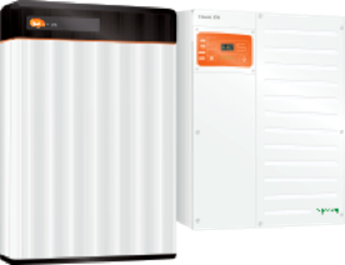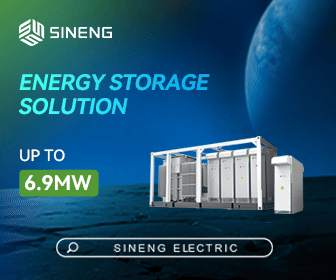Net Metering in North America - Allowing energy storage to enter a new era
 The process whereby energy produced at one point in time is captured for use at a later time is known as energy storage. Energy storage technology converts energy from forms that are difficult to store, into more convenient or economical storable forms. Grid energy storage consists of a collection of methods used to store electrical energy on a large scale within an electrical power grid. Electrical energy is stored during times when production exceeds consumption, especially from intermittent power such as wind, tidal power, and solar. The stored energy is then distributed via the grid when production is less than consumption.
The process whereby energy produced at one point in time is captured for use at a later time is known as energy storage. Energy storage technology converts energy from forms that are difficult to store, into more convenient or economical storable forms. Grid energy storage consists of a collection of methods used to store electrical energy on a large scale within an electrical power grid. Electrical energy is stored during times when production exceeds consumption, especially from intermittent power such as wind, tidal power, and solar. The stored energy is then distributed via the grid when production is less than consumption.
Why energy storage is important
- Energy storage can balance the load by allowing future consumption so existing generating capacity is used more efficiently.
- Power usages can be bridged to avoid a break in service during the seconds-to-minutes required to switch from one power generation source to another.
- Storage works to control voltage and frequency, which helps avoid damaging sensitive equipment.
Although the concept of energy storage has been discussed for years, it has not always been technically or economically feasible. The falling costs of technology, innovative new business models, and government policies and regulatory reforms, are driving a dynamic and fast growing market for energy storage. Energy storage markets around the world are expected to continue growing substantially in North America, from $40 billion in 2016, to $50 billion by 2020, according to Lux Research. This represents a 25 percent increase annually over the next four years.
New technologies such as lithium-ion batteries, flow batteries, flywheels, and sodium-sulfur battery systems, offer improved operational flexibility, better charge/discharge cycle life, and, in some cases, longer duration or fast response capabilities. Lithium-ion batteries in particular, with more power and extended lives, are becoming the dominant energy storage device.
Several jurisdictions in North America have modified energy regulations impacting energy storage. The California Public Utilities Commission (CPUC) approved a target requiring the state's three largest utilities to procure 1.3 gigawatts of energy storage by 2020. Two years ago, California changed its regulations to exempt small energy storage systems from interconnection fees and review. Over a dozen Mid-Atlantic States are enjoying reduced costs and improved service thanks to various energy storage systems. The U.S. Department of Energy, through its Grid-Scale Rampable Intermittent Dispatchable Storage (GRIDS) program, funds projects which develop innovative new energy storage technologies.
In Canada, the Ontario government recently proposed changes to its net metering regulations, to allow energy storage. Net metering is a billing arrangement by which companies and individuals who generate renewable energy on site for their own use, receive bill credits for any surplus electricity they output to the electricity grid. If the power supplier provides power that is greater than what is used from the grid over the billing period, the power supplier receives a credit that can help lower future energy bills. At the end of the billing period, the customer only pays for their net consumption. Net metering originated as a way to encourage consumers to invest in renewable energy sources such as solar or wind power.
Net metering regimes which allow energy storage, enable consumers who generate some or all of their own electricity, to use that electricity anytime instead of only when it is generated. This is particularly important for wind and solar power, which are non-dispatchable (cannot be distributed at the request of the grid owner or power plant). Net metering with storage allows consumers to defer their usage. For instance, solar power generated during the day could be used at night, or wind power generated one day could be used later in the month. Power usage can also be delayed to non-peak hours or even different months.
In Ontario, solar energy companies with solar storage products are applauding the proposed change in net metering regulations that allows storage. Dramatic declines in the price of solar photovoltaic (PV) energy systems have made it a very cost-competitive source of electricity. The addition of energy storage to a solar PV installation increases the usefulness and flexibility of solar, and allows the storage of excess solar electricity for use at night and on darker days.
Energy storage is an attractive option for those struggling with increasing energy bills, either from rising energy prices, or time-of-use programs like demand charges or dynamic pricing, that erode profits. Storage can also be a viable option for businesses that rely heavily on steady, high quality power, such as the semiconductor industry. Given the pressures of rising energy costs and the demand for more high quality power, as well as recent technological developments and energy regulatory changes, energy storage appears to be on the verge of a major breakthrough.
Sandro Costa is the vice president, energy efficiency sales at ONEnergy Inc., an energy management firm serving commercial, industrial, multi-residential, and residential clients. ONEnergy serves customers in both Canada and the United States, with offices in Toronto, Vancouver, and Stamford, CT.
ONEnergy Inc. | www.onenergyinc.com
Author: Sandro Costa
Volume: 2017 January/February









